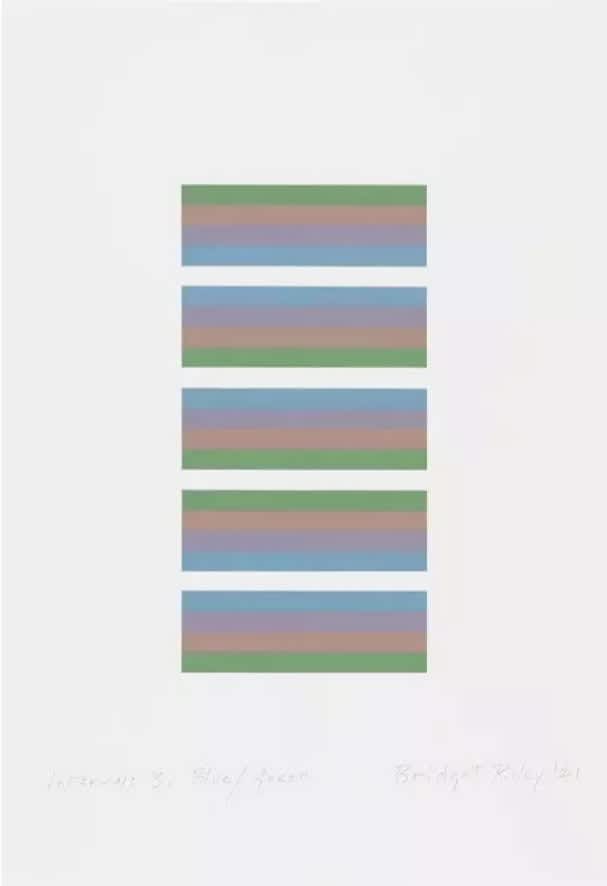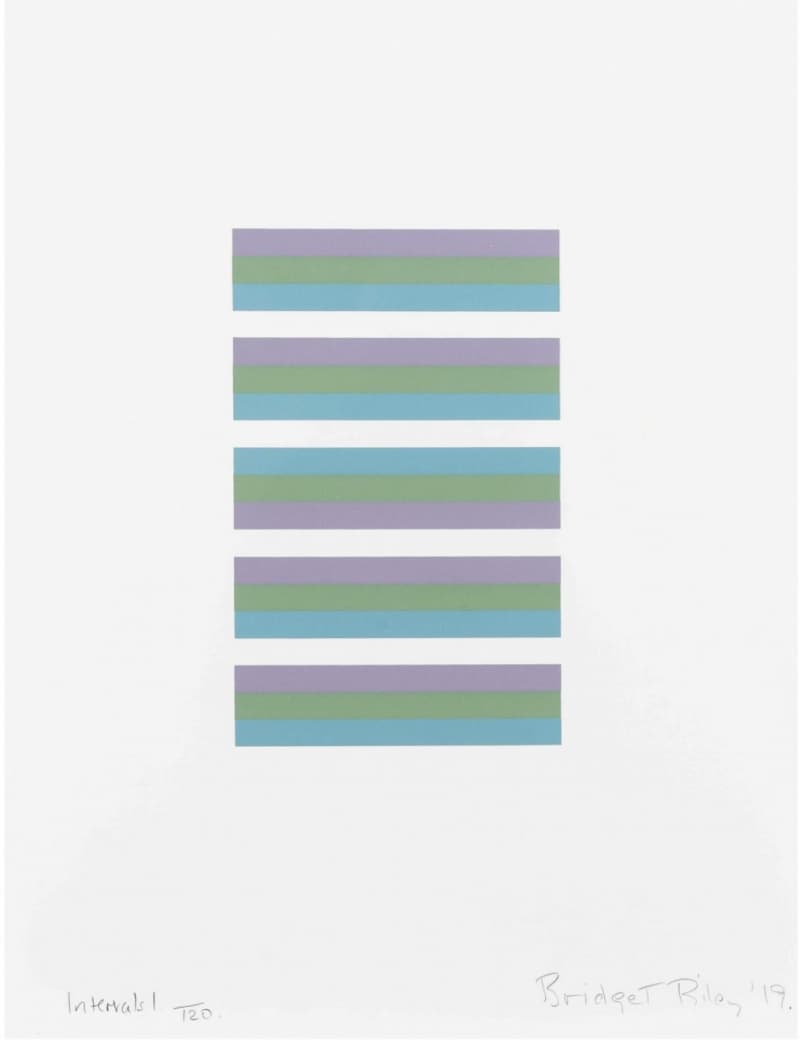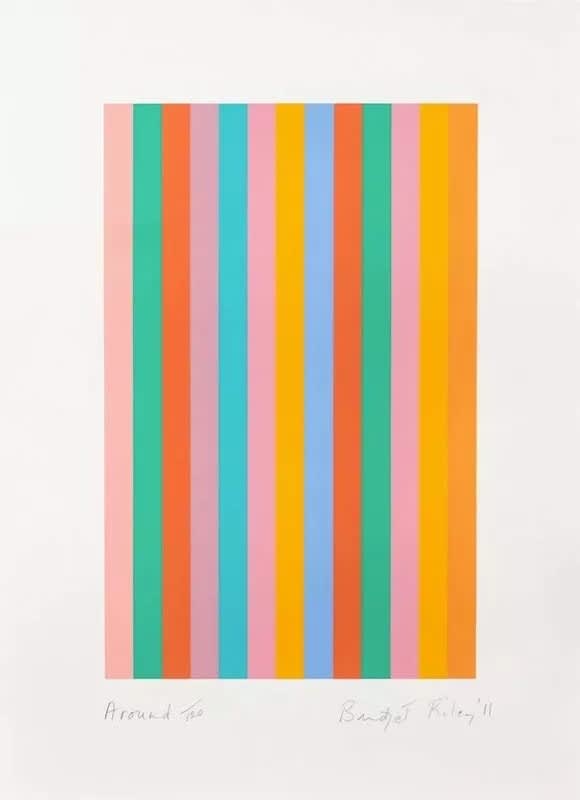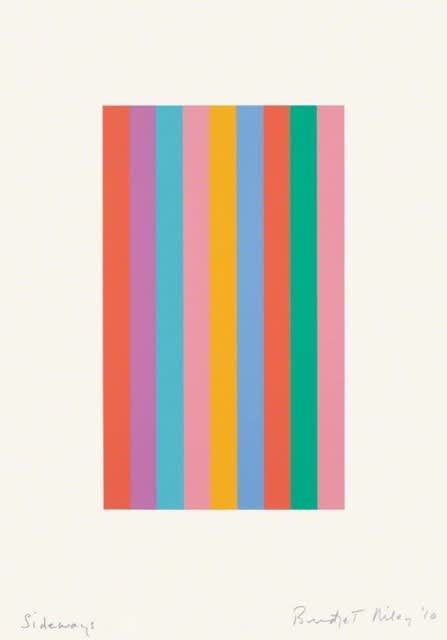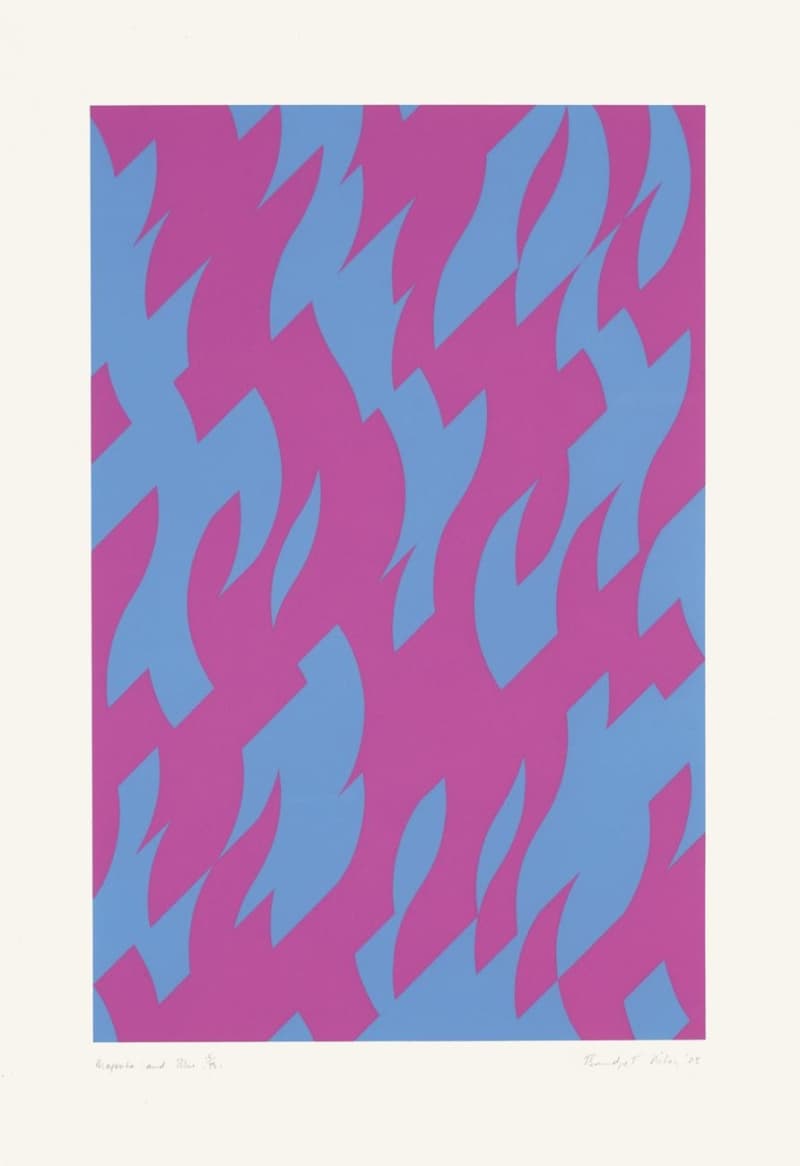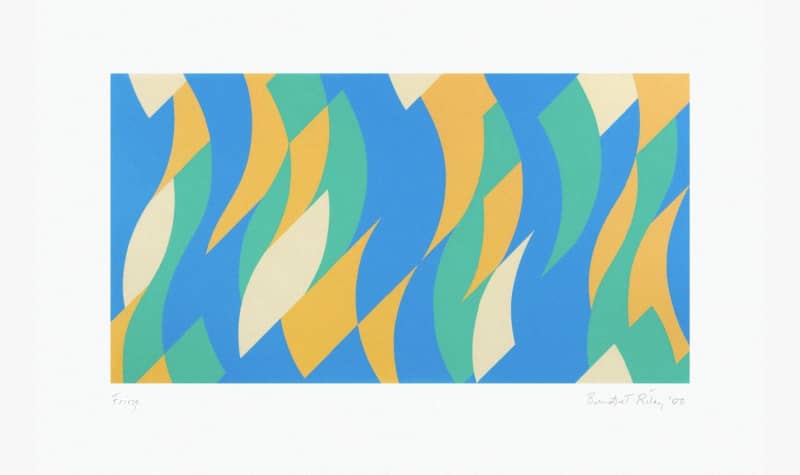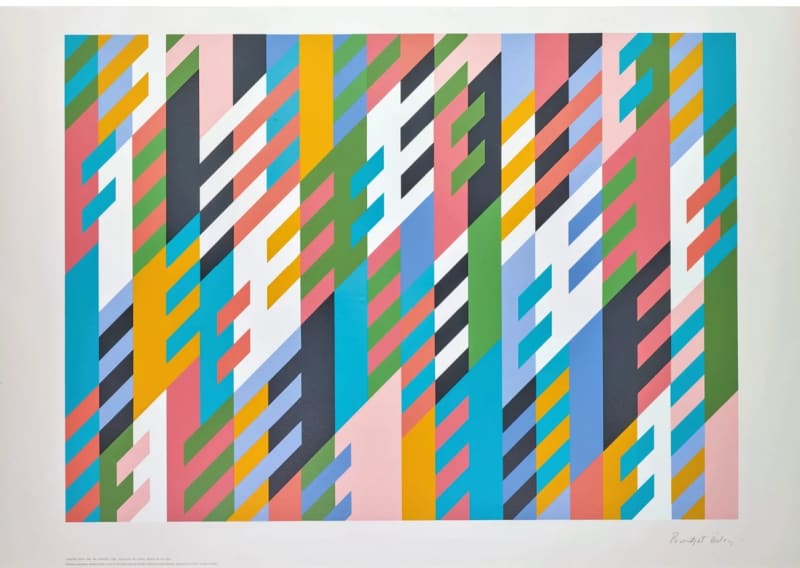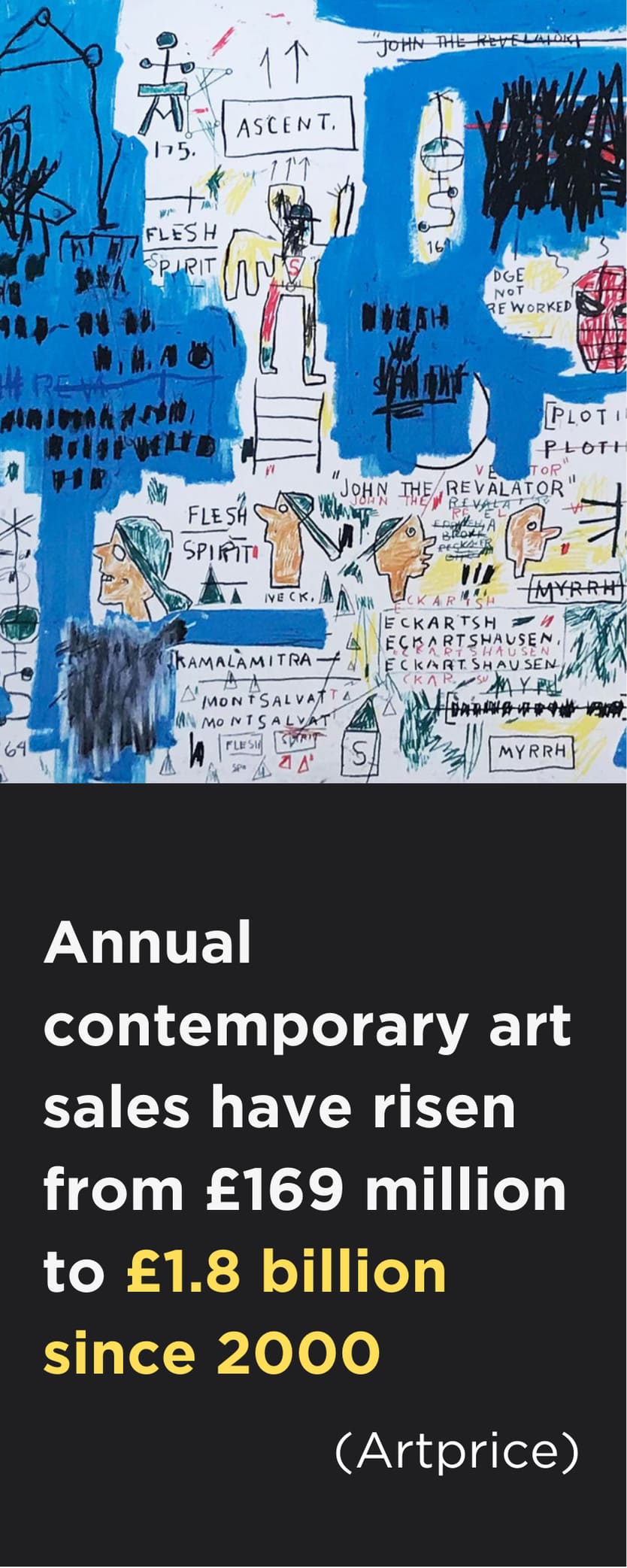Bridget Riley
Biography
"Bridget Riley, born in Norwood, London, is one of the most significant figures in contemporary British art. The daughter of a businessman, Riley spent her childhood in Cornwall and Lincolnshire, environments that would later influence her artistic vision."
Bridget Riley is a pioneering British artist known for her influential role in the Op Art movement. After studying at Goldsmiths' College and the Royal College of Art, Riley initially worked in semi-impressionist and pointillist styles before developing her signature optical works in the 1960s. Her mesmerizing pieces, like Fall (1963), explore the dynamic effects of visual perception.
Riley taught at several art schools and worked in advertising before dedicating herself fully to her art in the mid-1960s. She has exhibited widely, with her first solo show in 1962 and significant retrospectives at the Museum of Modern Art in New York and the Hayward Gallery in London. Her accolades include the 1968 International Painting Prize at the Venice Biennale, cementing her status as a key figure in contemporary art.
She studied at Goldsmiths' College from 1949 to 1952, followed by the Royal College of Art from 1952 to 1955. Initially, Riley focused on semi-impressionist figure paintings, but by 1958, she had transitioned to pointillism, primarily creating landscapes. It wasn't until 1960 that Riley developed the distinctive style for which she is best known—Op Art, a movement exploring the dynamic possibilities of optical phenomena. Her works, like Fall (1963, Tate Gallery), are celebrated for their ability to produce disorienting and mesmerizing effects on the viewer’s eye.
Riley’s career in education began with teaching children, followed by a role at the Loughborough School of Art, where she introduced a basic design course in 1959. She later taught at Hornsey School of Art and Croydon School of Art. Concurrently, from 1960, she worked for the J. Walter Thompson Group advertising agency, but by 1963-64, she had fully devoted herself to her art, leaving both teaching and advertising behind.
Riley's early works were showcased in several important group exhibitions, including Young Contemporaries (London, 1955), Diversion (South London Art Gallery, 1958), and the Arts Council Touring Exhibition in 1962. She gained further recognition through The New Generation (Whitechapel Gallery, 1964), Movement (Hanover Gallery, 1964), and the Tate Gallery's Painting and Sculpture of a Decade 1954-1964. Her works were also included in the groundbreaking Op Artexhibition, which toured Ireland in 1967. Riley's influence extended internationally, with her work featured in exhibitions such as The Sixties Collection Revisited at the Aldrich Museum of Contemporary Art in Connecticut (1978).
Riley received significant accolades throughout her career. In 1963, she was awarded both the AICA Critics Prize and a prize at the John Moores' Exhibition in Liverpool. The following year, she received the Peter Stuyvesant Foundation Travel Bursary to the USA. Her international acclaim was further solidified when she won the International Painting Prize at the 1968 Venice Biennale.
Riley’s first solo exhibition took place at Gallery One in 1962, with a follow-up solo show the next year. She continued to exhibit prolifically, with notable solo exhibitions at Nottingham University (1963), Richard Feigen Gallery in New York, Feigen Palmer Gallery in Los Angeles (both 1965), and a major retrospective at the Museum of Modern Art in New York, which toured the United States in 1966. Her work was also featured in the British Pavilion at the 1968 Venice Biennale, alongside Phillip King. Other significant solo exhibitions include those at the Hayward Gallery in London (1971, 1992), the National Gallery in Prague (1971), Kunsthalle Nuremberg (1992), Kettle's Yard in Cambridge (1995), and Waddington Galleries in London (1996). Riley’s legacy continues to inspire and challenge the boundaries of visual perception.

